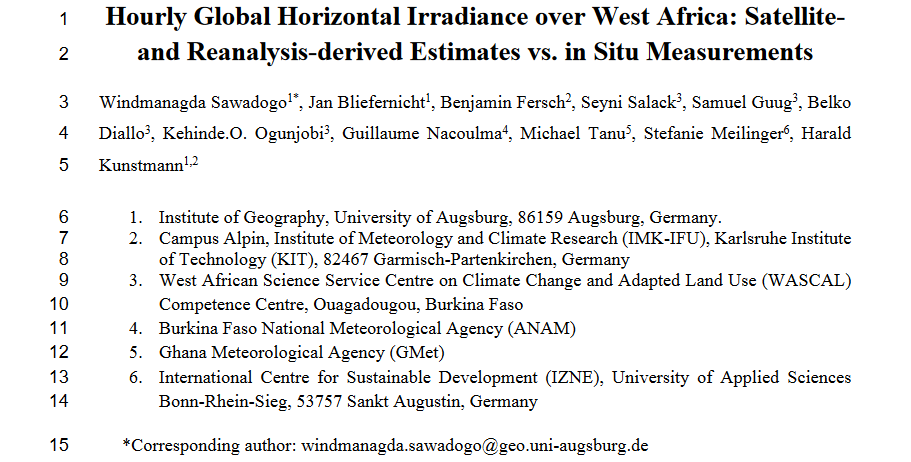
Windmanagda Sawadogo among other project members handed in a publication, which is now available as a pre-print
Hourly Global Horizontal Irradiance over West Africa: Satellite- and Reanalysis-derived Estimates vs. in Situ Measurements
Abstract: Estimates of global horizontal irradiance (GHI) from reanalysis and satellite-based data are the most important information for the design and monitoring of PV systems in Africa, but their quality is unknown due to the lack of in situ measurements. In this study, we evaluate the performance of hourly GHI from state-of-the-art reanalysis and satellite-based products (ERA5, CAMS, MERRA-2 and SARAH -2) with 51 quality-controlled in situ measurements from novel meteorological networks established in Burkina Faso and Ghana under different weather conditions. The effects of clouds and aerosols are also considered in the analysis by using common performance measures for the main quality attributes and a new overall performance value for the joint assessment. The results show that SARAH-2 performs better under cloudy sky (RMSE=237 W/m2 (24.51%)), clear sky (113 W/m2 (10.65%)) and all sky conditions (167 W/m2 (15.18%)), while ERA5 performs poorly under all sky conditions. The poor performance of all datasets under cloudy sky conditions is due to a large bias observed during the Harmattan period. The new measure of overall performance clearly shows that the hourly GHI derived from SARAH-2 is the best alternative for assessing solar energy in the different climatic zones of West Africa.
Click here to read the pre-print
Authors: Windmanagda Sawadogo, Jan Bliefernicht, Benjamin Fersch, Seyni Salack, Samuel Guug, Belko Diallo, Kehinde.O. Ogunjobi, Guillaume Nacoulma, Michael Tanu, Stefanie Meilinger & Harald Kunstmann